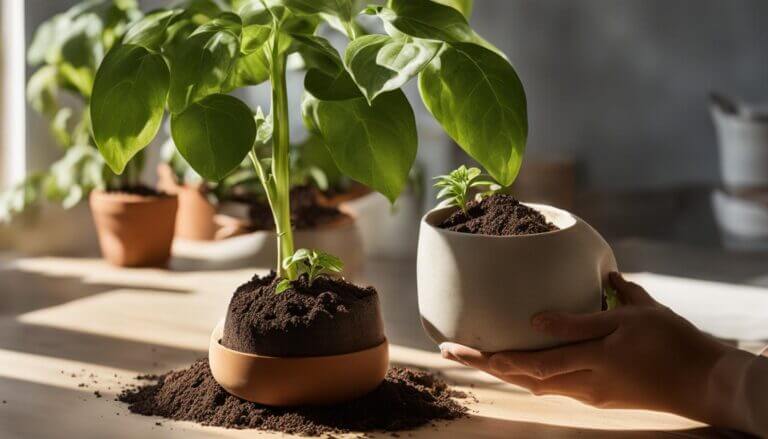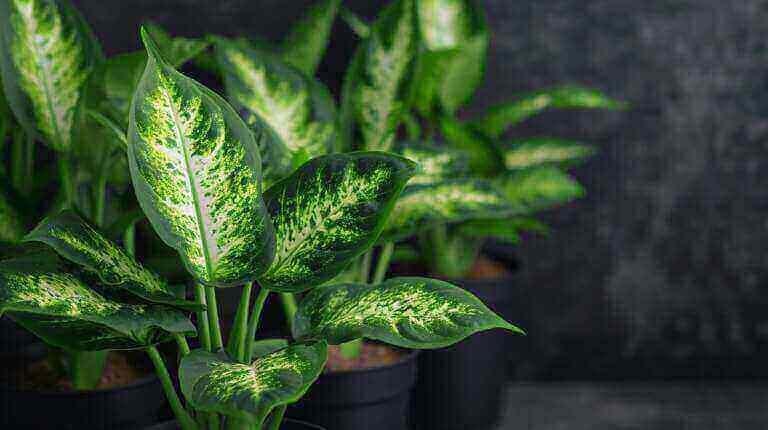Propagating Laceleaf Anthurium Plants from Seeds and Cuttings
Propagating laceleaf anthurium plants from seeds and cuttings is an exciting and rewarding experience for plant enthusiasts. There are several methods you can use to propagate these beautiful plants, including stem cuttings, root division, and growing from seeds. Each method has its own set of instructions and requirements, but all can lead to successful propagation and the creation of new laceleaf anthurium plants. Whether you prefer to propagate your anthurium plants from cuttings or seeds, there are steps you can follow to ensure the best chances of success. Let’s dive into each method in detail and explore the process of propagating laceleaf anthurium plants.
Key Takeaways:
- Propagating laceleaf anthurium plants can be done through stem cuttings, root division, or growing from seeds.
- Stem cuttings require a clean cut at a 45-degree angle, rooting hormone, and proper care to promote root development.
- Root division involves separating anthurium plants into sections with healthy root systems and replanting them in well-draining potting mix.
- Growing anthurium plants from seeds requires patience and specific conditions, such as a moist environment and indirect light.
- Proper care and attention are essential for successful propagation and the continued growth of new laceleaf anthurium plants.
Propagating Anthurium from Stem Cuttings
One popular method of propagating laceleaf anthurium plants is through stem cuttings. To propagate anthurium from stem cuttings, you’ll need a healthy, pest-free plant to ensure the success of your cuttings. Take a 6-8 inch section of stem from a leafy part of the plant, making a clean cut at a 45-degree angle. Dip the cut end of the stem in rooting hormone to promote root development.
You can choose to root the cutting in soil by planting it in a pot filled with moistened potting mix, or you can root it in water by placing the stem in a jar or vase filled with water. In either method, make sure to provide bright, indirect light and keep the soil or water moist but not soggy. Within 6-8 weeks, you should see new roots growing from the stem. Once the roots are about 1-2 inches long, you can transplant the new plant into a larger pot or into your garden.
Rooting anthurium in water is a popular choice for many plant enthusiasts, as it allows you to observe the growth of roots. It’s essential to change the water regularly to prevent rotting. Additionally, you can propagate anthurium by using leafy stem cuttings. Ensure that each cutting has at least one leaf and one node, as this is where the roots will develop. Remove the lower leaves to encourage focus on root development.
To increase your chances of success, use a well-draining potting mix for soil propagation. Indirect light is ideal for rooting anthurium cuttings, as direct sunlight can burn the delicate leaves. Keep an eye out for new growth, as this is a sign that your cutting has successfully taken root. Once your propagated anthurium is established, you can transplant it into a larger pot or introduce it to your garden, where it will continue to flourish and bring beauty to your space.
| Propagating Anthurium from Stem Cuttings | Benefits | Considerations |
|---|---|---|
| Rooting in water |
|
|
| Soil propagation |
|
|
Propagating Anthurium through Root Division
Dividing anthurium roots is another effective method of propagating laceleaf anthurium plants. To start, I dig up the entire plant, gently loosening the soil around the roots. I then wash away the soil by dipping the roots in a pot of water. Separating the anthurium plant into two or more sections is crucial, ensuring that each section has a healthy root system.
Next, I replant each section in its own pot filled with a well-draining potting mix. This mix, consisting of soilless components like peat moss, bark chips, and coarse sand, promotes proper aeration and prevents root rot. It’s important to water the newly propagated plants well and keep the soil consistently moist. I use a handy moisture meter to monitor the moisture level, making adjustments as needed.
With proper care and attention, the newly divided anthurium plants will thrive and continue to beautify your garden or indoor space. Root division is a reliable method that allows the plants to self-propagate, ensuring a healthy and abundant supply of laceleaf anthuriums. Remember to choose nursery pots that are appropriately sized for each section and provide enough room for the fleshy roots to grow. By following these steps, you can successfully propagate anthurium through root divisions and expand your collection of these stunning plants.
FAQ
Can I propagate laceleaf anthurium plants from seeds?
Yes, laceleaf anthurium plants can be propagated from seeds. However, it is important to note that growing anthurium from seeds can be a slow and unpredictable process. It can take several years for the seeds to germinate and develop into mature plants. Patience and proper care are essential when propagating anthurium from seeds.
How long does it take for anthurium stem cuttings to develop roots?
Anthurium stem cuttings usually develop roots within 6-8 weeks. However, the exact timing may vary depending on various factors such as temperature, humidity, and the health of the cutting. It is important to provide the right conditions, including bright, indirect light and moist soil or water, to encourage root development.
Can I propagate anthurium through leaf cuttings?
While some plants can be propagated from leaf cuttings, anthuriums are typically not propagated through this method. Anthuriums primarily produce new plants through stem cuttings and root division. Leaf cuttings are less likely to develop roots and establish new plants successfully.
How often should I water newly propagated anthurium plants?
It is important to keep the soil or water moist but not overly wet when watering newly propagated anthurium plants. Check the moisture level regularly, and water when the top inch of soil feels dry. Avoid overwatering, as it can lead to root rot and other issues. Use a moisture meter to accurately monitor the moisture level.
Can I propagate anthurium from root divisions without removing the plant from the soil?
Yes, it is possible to propagate anthurium from root divisions without removing the plant from the soil. To do this, carefully dig around the base of the plant and gently loosen the soil. Identify sections of the plant with healthy root systems and carefully separate them while leaving the plant in its original location. Replant the divided sections in their own pots filled with well-draining potting mix.







